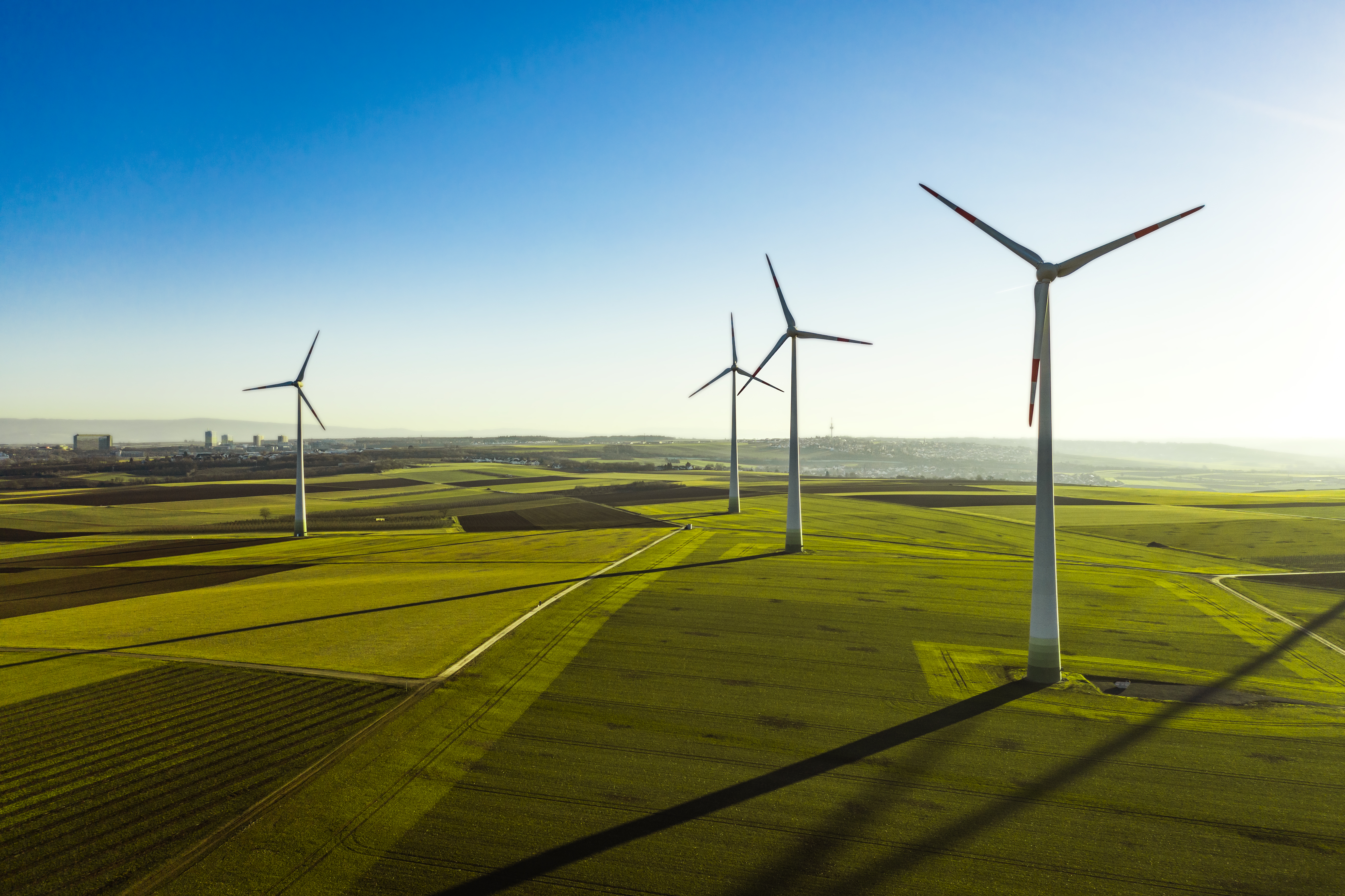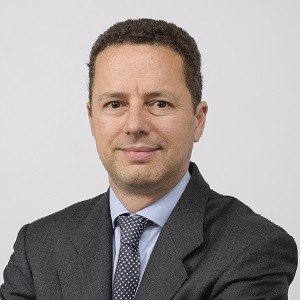Debt’s defence against volatility

In Kürze
"We think that the infrastructure debt asset class will keep growing, and investors will continue to look for more returns"

by Philippe Benaroya
Managing partner and CEO at Infranity
The appetite for infrastructure debt continues to grow, with a well-developed pipeline of investments, says Infranity’s Philippe Benaroya
In difficult economic conditions, investors often turn their attention to assets that can offer stability and resilience to their portfolios. The last year or so has certainly provided more than its fair share of turbulence, with investors navigating a covid-related rebound, followed by high levels of inflation and interest rate rises.
In such a climate, infrastructure debt has demonstrated its resilience time and again. Philippe Benaroya, managing partner and CEO of Infranity, the asset management firm which is part of the Generali Investments platform, provides his perspectives on the asset class and how Infranity identifies investment solutions that meet the financial objectives of its clients while delivering long-term positive impact.
How do you see the current appetite for infrastructure debt?
Demand for infrastructure debt is strong at the investor level as it brings many benefits, such as attractive risk-adjusted returns and proven resilience. In addition, these investments often have low correlation factors with GDP and other asset classes. As such, they represent a good hedge gainst what has happened over the last few years with regards to macroeconomic developments.
The appetite for infrastructure debt is increasing and the investment strategy continues to generate higher returns than those that can be obtained on the public markets. When you look at the investment pipeline, we see that it continues to offer a broad set on investment opportunities. This means we can meet investors’ demands while continuing to invest on a selective basis.
Infrastructure debt is a highly diversified asset class, with a broad spectrum of sponsors for infrastructure projects. These projects often have strong needs in terms of debt capital to finance investments, so it is about matching demand from an underlying business or project with private debt capital.
At Infranity, we are part of the Generali Investments ecosystem of specialised asset management companies where we focus on resilient, sustainable infrastructure investments across Europe. Currently infrastructure debt is our biggest focus, but our equity business is also developing at the same time.
Our investment approach is well-suited to the challenging macroeconomic conditions that investors have been experiencing since the covid-19 pandemic. The way we target debt investments has largely insulated investors from the negative impacts of these economic conditions.
What key themes should investors be aware of and what is the impact of today’s macroeconomic climate?
Investors are looking for resilient and sustainable investments. Everyone is cognisant of the widening pipeline into the areas of energy transition and digital transition and there is an increasing number of investment opportunities in these areas. We tend to focus on brownfield businesses and assets offering existing cashflows.
Green mobility is another important theme for investors, with sustainable transport, EV charging and electric cars all growing in popularity. These themes have substantial capital needs.
The increasing demand we are witnessing in these areas represents a popular method for investors to defend themselves against the macroeconomic situation and the heightened volatility that you can get with other asset classes.
Infrastructure is the asset class that seems to be growing most rapidly and, at some point, it could even catch up with real estate. That is how strong its growth potential is.
There are different investment strategies within infrastructure debt. There is senior, investment-grade debt. We have taken a thematic approach at below investment-grade level. The thematic approach that we developed involves having a fund focused on green energy, for example, that can have a positive impact on climate change. We also invest through funds that can have a social impact, supporting the digital transition and social infrastructure.
Our thematic approach is implemented via Article 9 funds. We have positioned those funds at a BB credit rating level as this is where we see the most attractive risk-adjusted returns, especially if compared to junior debt. These sub-investment grade funds can generate returns of around 7 percent all-in, so are very attractive to investors .
Are you witnessing any geographic nuances in terms of the infrastructure projects being pursued?
It is always good to cover a broad, global scope, which is why, even though we focus on the European market, we are looking at potential expansion to other regions, possibly North America. But of course, it has to be remembered that North America and Europe are very different markets in terms of scope and dynamics.
North America is somewhat different when it comes to infrastructure debt, particularly regarding tax-exempt bonds. There is also a huge renewable energy market in the US, which is attractive to investors, and the digital sector there is similarly large.
Are there any interesting innovations that you are currently involved with in the debt space?
We try to innovate as much as we can. This is clear through our thematic funds. We continue to develop methodologies that will help with the selection of sustainable investment with a scope as broad as possible, whether these have environmental or social impact.
In terms of the former, the drive towards more sustainable investments is unlocking innovation. For example, we have seen this through our recently closed holdco debt facility, which will support the green energy transition.
Today, there is a greater focus on sustainability, including renewables, biodiversity and other ESG themes. We are continuing to be ambitious in supporting the sustainable agenda through impact investing. This means continually evolving our product offering so it better suits investors and the planet. Innovative infrastructure debt investments can meet the needs of both.
What key elements do you look for when evaluating investment opportunities?
We have a very rigorous selection process when it comes to identifying investment opportunities. We look for sustainable investments, especially regarding our Article 9 funds. Our ESG objectives are ambitious, and we take great care to ensure our investments are aligned with the UN’s Sustainable Development Goals.
Of course, our selection criteria for investments is not solely concerned with impact. We are also looking for attractive risk-adjusted returns.
Today, you want to be protected against inflation, which means building diversified portfolios. We aim to deploy our investments in a timely fashion.
We commit roughly €2 billion a year to infrastructure debt, which means we have a large influence on transactions, allowing us to get better returns. We have a very high selectivity rate. Within the 300 to 400 transactions that we see each year, we select around 15 to 20.
Where do you see most activity going forward? Do you have any predictions regarding future opportunities?
Activity continues to firmly grow based on investor demand and the project pipeline. It is an asset class with a lot of capital commitments. One has to be very rigorous when it comes to planning ahead. The market offers significant opportunities to grow investor exposure, but investors must use managers that know the market well.
In many cases, new sectors are emerging where investors need to be careful, such as hydrogen or EV charging, as projects may not yet be underpinned by solid business cases or the necessary level of understanding from an investment perspective. One has to be cautious, but these sectors do have a lot of potential.
You need to work with experienced people. My prediction is that the infrastructure debt asset class will keep growing, and investors will continue to look for more returns. We develop products on this basis, but we always test our investments through an increasing number of risk factors, whether it is the macroeconomic environment or climate change. This requires increasingly high levels of expertise and experience.
Investors are looking for experts that have been through multiple investment cycles and have first-hand experience with low-probability factors that can have a major impact on profitability. The world has shown over the last two to three years that strong expertise and longstanding experience are required to overcome new challenges.
Download the full publication below
IMPORTANT INFORMATION
This communication is related to Infranity and is not a marketing communication related to a fund, an investment product or investment services in your country. This document is not intended to provide investment, tax, accounting, professional or legal advice.
This communication is issued by Generali Investments Partners S.p.A. Società di gestione del risparmio, an Italian asset management company regulated by Bank of Italy (Via Niccolò Machiavelli 4, Trieste, 34132, Italia - C.M. n. 15376 - LEI: 549300DDG9IDTO0X8E20).
Infranity SAS is a portfolio management company approved by the AMF under n.GP-19000030 on 24 June 2019 (6 rue Ménars, 7502 LEI: 969500Q2KIYRFU90OR39)
Any opinions or forecasts provided are as of the date specified, may change without notice, do not predict future results and do not constitute a recommendation or offer of any investment product or investment services. This document is only intended for investors in Italy. This document is not intended for US Persons, as defined under Regulation S of the United States Securities Act of 1933, as amended.
The information is provided by Generali Investments Partners S.p.A (the “Issuer”). All data used in this document, unless otherwise indicated, are provided by the Issuer. This material and his contents may not be reproduced or distributed, in whole or in part, without express consent written by the Issuer.
